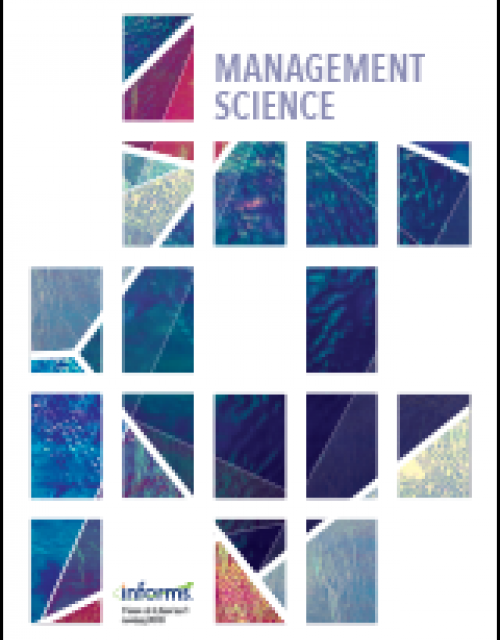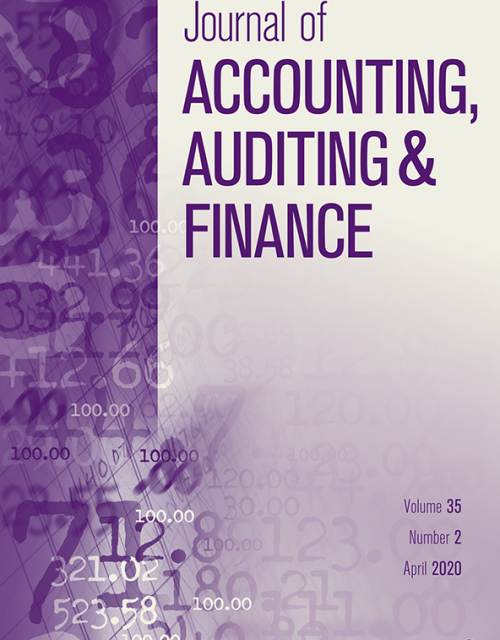Publication records
Subject(s)
Strategy and general management
Keyword(s)
Price discrimination, personalized pricing, mobile apps, online games, freemium
JEL Code(s)
D40, L11
Pages
93
Subject(s)
Technology, R&D management
Keyword(s)
R&D incentives, tax incentives, innovation, technology
This article provides a structured overview on the most important features of the new German legislation awarding tax breaks for R&D active companies.
Volume
2021
ISSN (Print)
1868-2979
Subject(s)
Information technology and systems; Product and operations management; Strategy and general management; Technology, R&D management
Keyword(s)
digital identity, technology
The article deals with the potential that lies in the creation of a digital identity. More concretely, the article explores to what extent the customer experience can be improved by a digital/electronic identity system that allows customers to just use one single mobile app to pull data from various providers.
Subject(s)
Human resources management/organizational behavior
Keyword(s)
Leadership, remote work, emotional intelligence
Eloïse has a problem. The company’s board has decided that her team will be moved to a new location – one that is in a shabby building, located far off the beaten track, and (adding insult to injury) with a horrible staff canteen. The kicker: The board tasked Eloïse with informing her team, who will be returning from their home offices to this new pandemic workplace reality. In her latest article for Forbes, Nora Grasselli, program director of ESMT Executive Education, tackles what these tough situations demand of Eloïse and other executives who are having to manage the economic fallout of the pandemic for themselves and their teams. Often, they are left to manage it alone, under conditions of extreme stress and cut loose from network support. What, asks Grasselli, can Eloïse do to handle leadership solitude and its consequences?
ISSN (Print)
0015-6914
Subject(s)
Health and environment; Information technology and systems
Keyword(s)
Public health, epidemic control, information design, strategic behavior
This paper explores how governments may efficiently inform the public about an epidemic to induce compliance with their confinement measures. Using an information design framework, we find the government has an incentive to either downplay or exaggerate the severity of the epidemic if it heavily prioritizes the economy over population health or vice versa. Importantly, we find that the level of economic inequality in the population has an effect on these distortions. The more unequal the disease's economic impact on the population is, the less the government exaggerates and the more it downplays the severity of the epidemic. When the government weighs the economy and population health sufficiently equally, however, the government should always be fully transparent about the severity of the epidemic.
© 2021, INFORMS
Volume
67
Journal Pages
6350–6357
Subject(s)
Economics, politics and business environment; Strategy and general management
Keyword(s)
economic dependency, bargaining theory, vertical restraints, law & economics, competition law
JEL Code(s)
D43, D86, L42, K210
An increasing number of countries have introduced some form of prohibition of abuses of economic dependence or broadened the scope of their existing legislation. Yet, very little has been written on the economics of economic dependence, that is on economic reasoning, tools or metrics that can be relied upon to identify whether a company is economically dependent on another company. The present paper aims to fill this gap, and argues that bargaining theory and the economics of relative market power can be helpful to characterise economic dependence. We summarise a number of takeaways from this literature, and describe empirical strategies that can be relied upon to try and quantify economic dependence in specific cases.
View all ESMT Working Papers in the ESMT Working Paper Series here. ESMT Working Papers are also available via SSRN, RePEc, EconStor, and the German National Library (DNB).
ISSN (Print)
1866–3494
Subject(s)
Diversity and inclusion; Strategy and general management
Keyword(s)
Chance models, adaptation, organizational learning, luck, situation, risk-taking
Chance models—mechanisms that explain empirical regularities through unsystematic variance—have a long tradition in the sciences but have been historically marginalized in management scholarship, relative to an agentic worldview about the role of managers and organizations. An exception is the work of James G. March and his coauthors, who proposed a variety of chance models that explain important management phenomena, including the careers of top executives, managerial risk taking, and organizational anarchy, learning, and adaptation. This paper serves as a tribute to the beauty of these “little ideas” and demonstrates how they can be recombined to generate novel implications. In particular, we focus on the example of an inverted V-shaped performance association centering around the year when executives were featured in a prominent listing, Barron’s annual list of Top 30 chief executive officers. Our extension of March and Shapira’s 1992 model provides a novel explanation for why many of the executives’ exceptional performances did not persist. In contrast to the common accounts of complacency, hubris, and statistical regression, the results show that declines from high performance may result from the way luck interacts with these executives’ slow adaptation, incompetence, and self-reinforced risk taking. We conclude by elaborating on the normative implications of chance models, which address many current management and societal challenges. We further encourage the continued development of chance models to help explain performance differences, shifting from accounts that favor heroic stories of corporate leaders toward accounts that favor their changing fortunes.
Copyright © 2021 Emerald Publishing Limited
Volume
76
Journal Pages
129–158
ISSN (Online)
978-1-78756-591-3
ISSN (Print)
978-1-78756-592-0
Subject(s)
Management sciences, decision sciences and quantitative methods; Strategy and general management
Keyword(s)
behavioral strategy, diversity, behavioral failures, strategic opportunities, CSRL limits to arbitrage
The persistent failure of organizations to engage diversity—to employ a diverse workforce and fully realize its potential—is puzzling, as it creates labor-market inefficiencies and untapped opportunities. Addressing this puzzle from a behavioral strategy as arbitrage perspective, this paper argues that attractive opportunities tend to be protected by strong behavioral and social limits to arbitrage. I outline four limits—cognizing, searching, reconfiguring, and legitimizing (CSRL)—that deter firms from sensing, seizing, integrating and justifying valuable diversity. The case of Moneyball is used to illustrate how these CSRL limits prevented mispriced human resources from being arbitraged away sooner, with implications for engaging cognitive diversity that go beyond sports. This perspective describes why behavioral failures as arbitrage opportunities can persist and prescribes strategists, as contrarian theorists, a framework for formulating relevant behavioral and social problems to solve in order to search for and exploit these untapped opportunities.
Copyright © 2021, The Author
Volume
32
Journal Pages
1193–1209
Subject(s)
Human resources management/organizational behavior
Keyword(s)
Career shocks, executives, executive coaching
This paper is a qualitative exploration of managers’ career shock experiences reflected in executive coaching interventions. It takes an anecdotal look at how executives react to shocks of various valences, and how coaching attempts to assist them by processing their first reactions and choosing a response. The paper particularly looks at managers’ responses almost immediately following a shocking event triggering their request for coaching help.
Volume
26
Journal Pages
582–595
Subject(s)
Finance, accounting and corporate governance
Keyword(s)
Analyst forecast, earnings announcement, investor sophistication, under-reaction
We decompose analysts’ earnings forecast error into predictable and unpredictable components, and investigate individual vis-à-vis institutional investors’ reactions to each of these components. We find that in the immediate post-earnings announcement window, only individuals under-react to the predictable component, while both individuals and institutions under-react to the unpredictable component. The price drift in this window is driven primarily by investors’ under-reaction to the unpredictable component. This drift remains highly significant in larger firms and intensifies in firms with complex financial reports, suggesting that it likely represents the slow and noisy process of price discovery. Around the next quarterly earnings announcement, only individuals under-react to the previous quarter’s predictable component, and this fixation drives the entire price drift in this window. This drift disappears in larger firms, and gets exacerbated in firms with greater forecast error autocorrelations, suggesting that it is likely attributable to incomplete processing of earnings information by individuals.
With permission of SAGE Publishing
Volume
36
Journal Pages
826–853
ISSN (Online)
2160-4061


